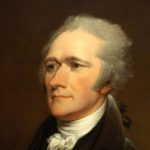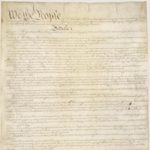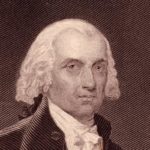Instead of placing authority in the hands of one person, like a king, or even a small group of people, the U.S. Constitution divides power. Power is first divided between the national, or federal government, and the state and local government under a system known as Federalism. At the federal level, the Constitution again divides power between the three major branches of our federal government: the legislative, the executive, and the judicial. Discover the battles of the branches in the National Constitution Center’s learning module.
Article I: The Legislative Branch
The power to make laws in our country falls in the hands of the Legislative Branch. The branch is outlined in Article I of the Constitution. The Legislative Branch is divided into two houses of Congress. The House of Representatives is made up of representatives proportionate to their state’s population while each state maintains equal representation in the Senate. Learn all about Article I in the National Constitution Center’s learning module.
What is the Judicial Branch?
This lesson exposes students to the judicial branch and the power of judicial review. They will read about an actual Supreme Court case, Torcaso v. Watkins, to see how the judicial branch used its power of judicial review to strike down an unconstitutional state law.
Starter Kit: Federalism Podcast
A tug of war, a balancing act, two dancers dragging each other across the floor. This is the perpetual ebb and flow of power between the states and the federal government. How can things be legal in a state but illegal nationally? Are states obstinate barricades to federal legislation? Or are they laboratories of democracy?
This short episode includes a one-page Graphic Organizer for students to take notes on while listening, as well as discussion questions on the back side.
The Federalist Debates: Balancing Power Between State and Federal Governments

This series of activities introduces students to one of the most hotly debated issues during the formation of the American government — how much power the federal government should have — or alternatively, how much liberty states and citizens should have.
By tracing the U.S. federal system of government to its roots, established by America’s Founding Fathers in the late 18th century, student examine the controversial issue of state sovereignty versus federal power. Students compare the Articles of Confederation to the Constitution, analyzing why weaknesses in the former led to the creation of the latter. Then they examine the resulting system of government formed by the Constitution.
The Appointment of Sandra Day O’Connor
The U.S. Constitution grants the President the power to appoint people to a variety of government positions. These appointments require careful thought and consideration since the people can have a great impact on the lives of many Americans during that President’s term. Some appointments need even greater thought and consideration, and those are to the federal judicial system and more importantly, to the Supreme Court of the United States. Justices of the Supreme Court (and other federal courts) serve lifetime appointments. Their rulings as they interpret the Constitution, and other situations as outlined in Article III of the Constitution, can have far-reaching effects for generations. With this awesome power to appoint comes an equally awesome responsibility to make sure that the individuals are the best people for the job. In this lesson, students will examine the appointment of Supreme Court Justice Sandra Day O’Connor, who was also the first female Justice. Students will examine the process by which a President makes the selection and the steps that lead to that person being confirmed by the Senate (or not).
Federalism
“Federalism” is the word used to describe the Constitution’s system of dividing political power between the national government and the states. What is federalism and how does it work? Why did the founders build federalism into our constitutional system and what are the modern debates over federalism today? Explore the National Constitution Center’s Federalism learning module to learn more!
Arizona Legislature v. Arizona Independent Redistricting Commission (2015)
Did Proposition 106 violate the Elections Clause of the US Constitution by removing congressional districting power from the state legislature? The case summary provides the facts, and the Supreme Court’s answer to this question.
James Madison Lesson 3: Raising an Army: Balancing the Power of the States and the Federal Government
Ratifying the Constitution

This lesson introduces students to the vigorous debates between the Federalist and the Anti-Federalists surrounding the ratification of the Constitution that took place in the state conventions.
In the state ratification conventions, delegates argued the wisdom of adopting the Constitution. Elected specifically to serve in these conventions, they came from a range of backgrounds, from the very elite and highly educated, to those of humbler birth and station. State delegates grappled with questions about the nature of democracy, the distribution of wealth and power in society, the rights of individuals and minority groups, and the role of dissent in a republic.
